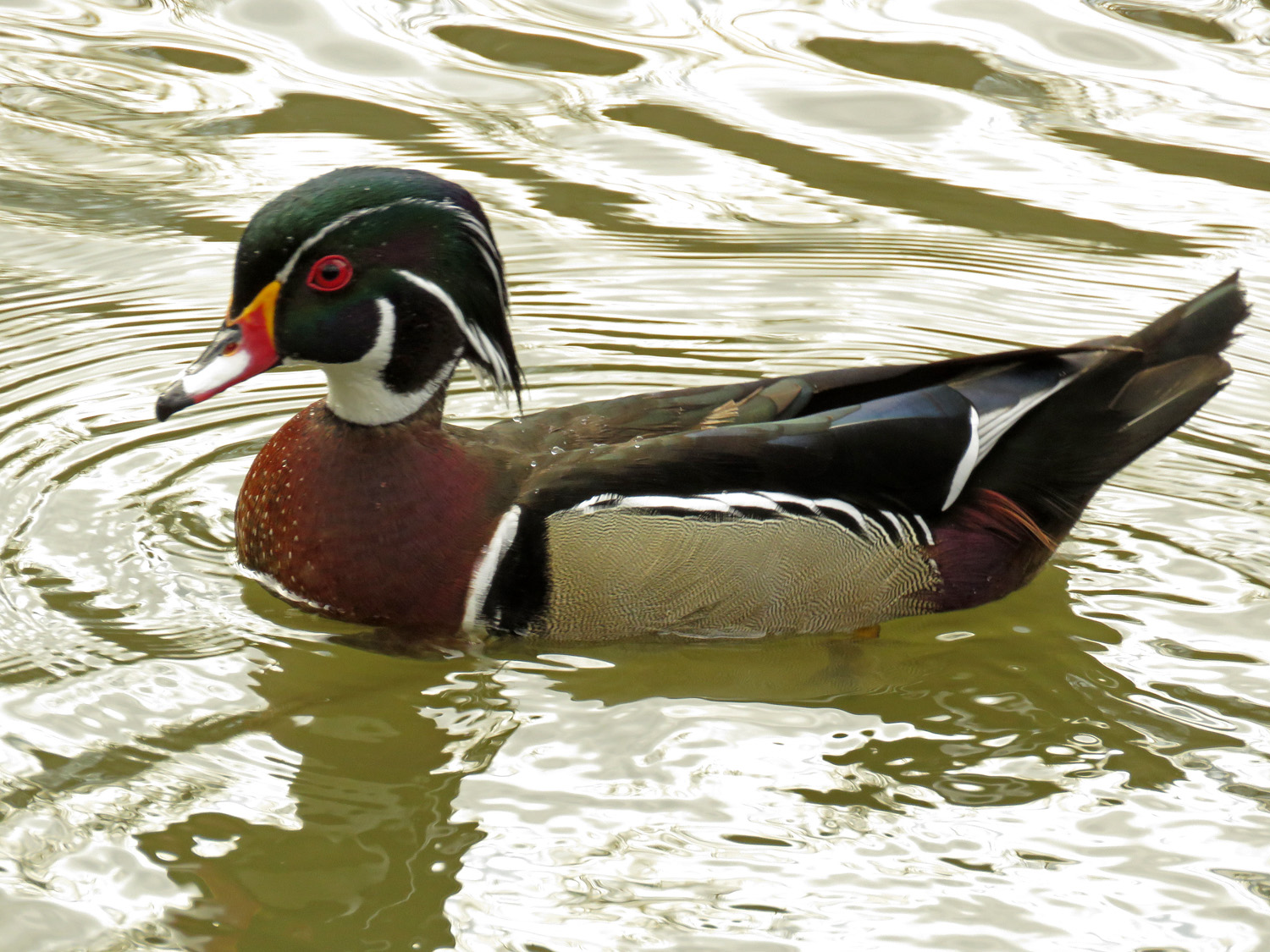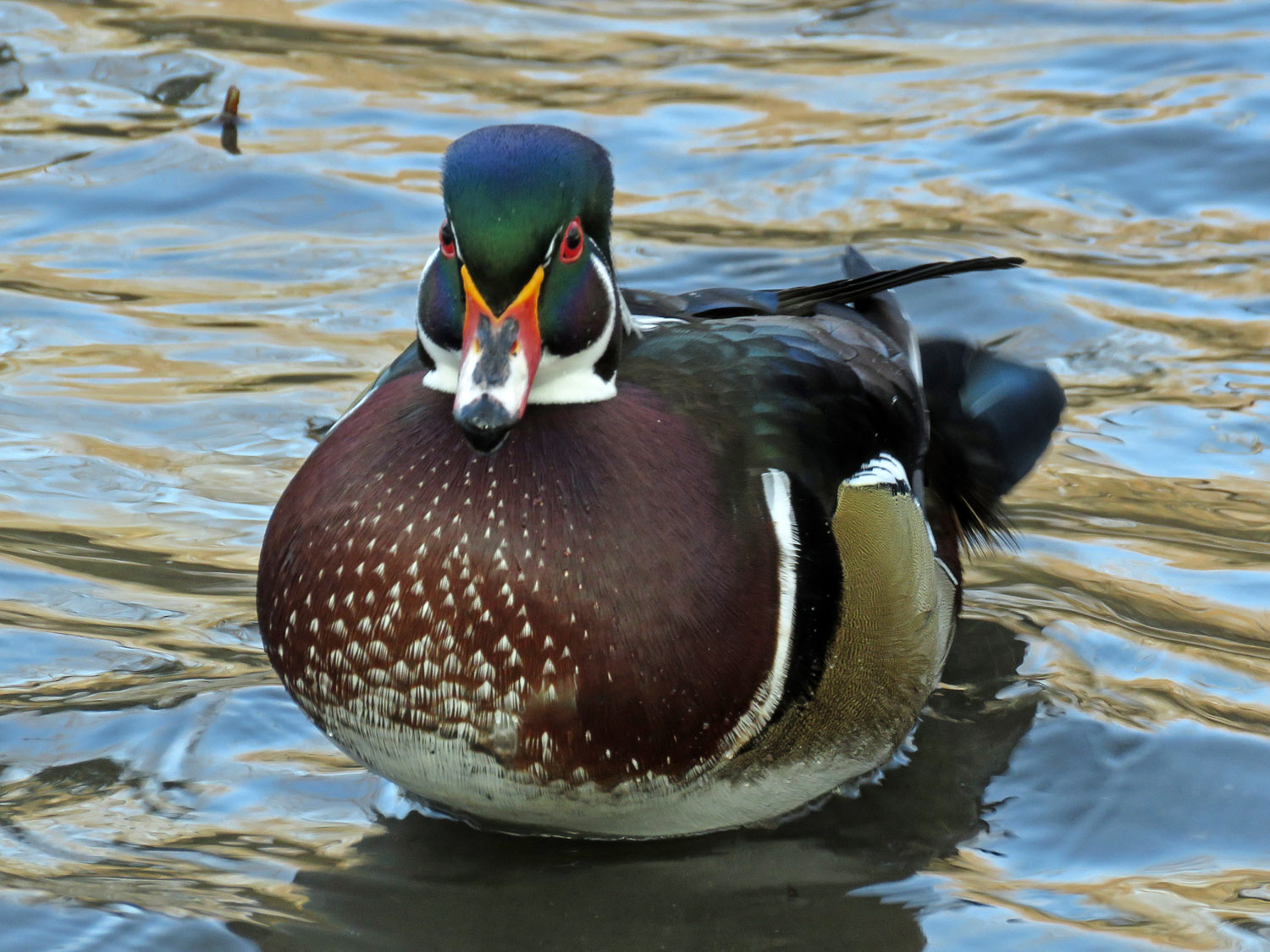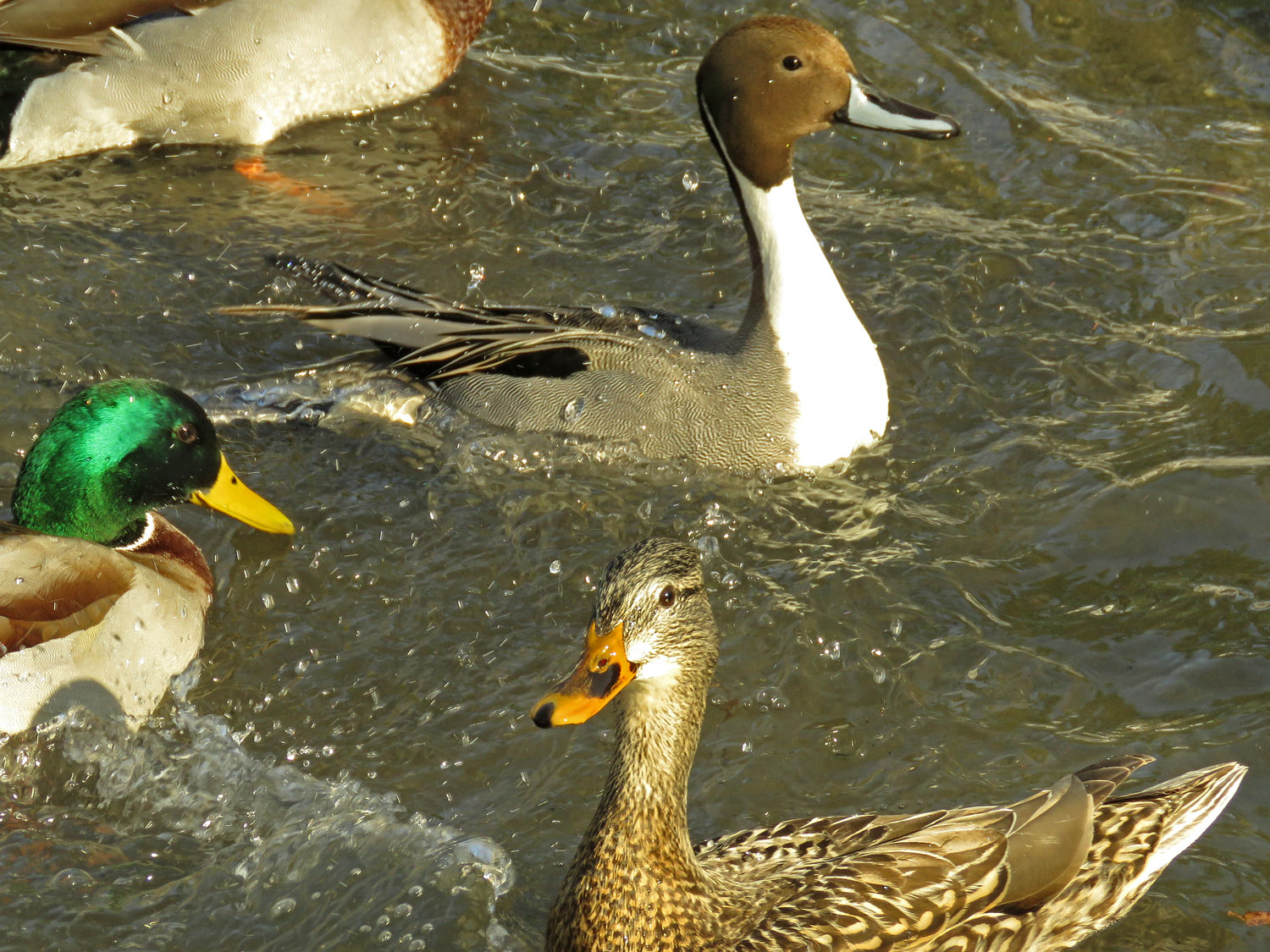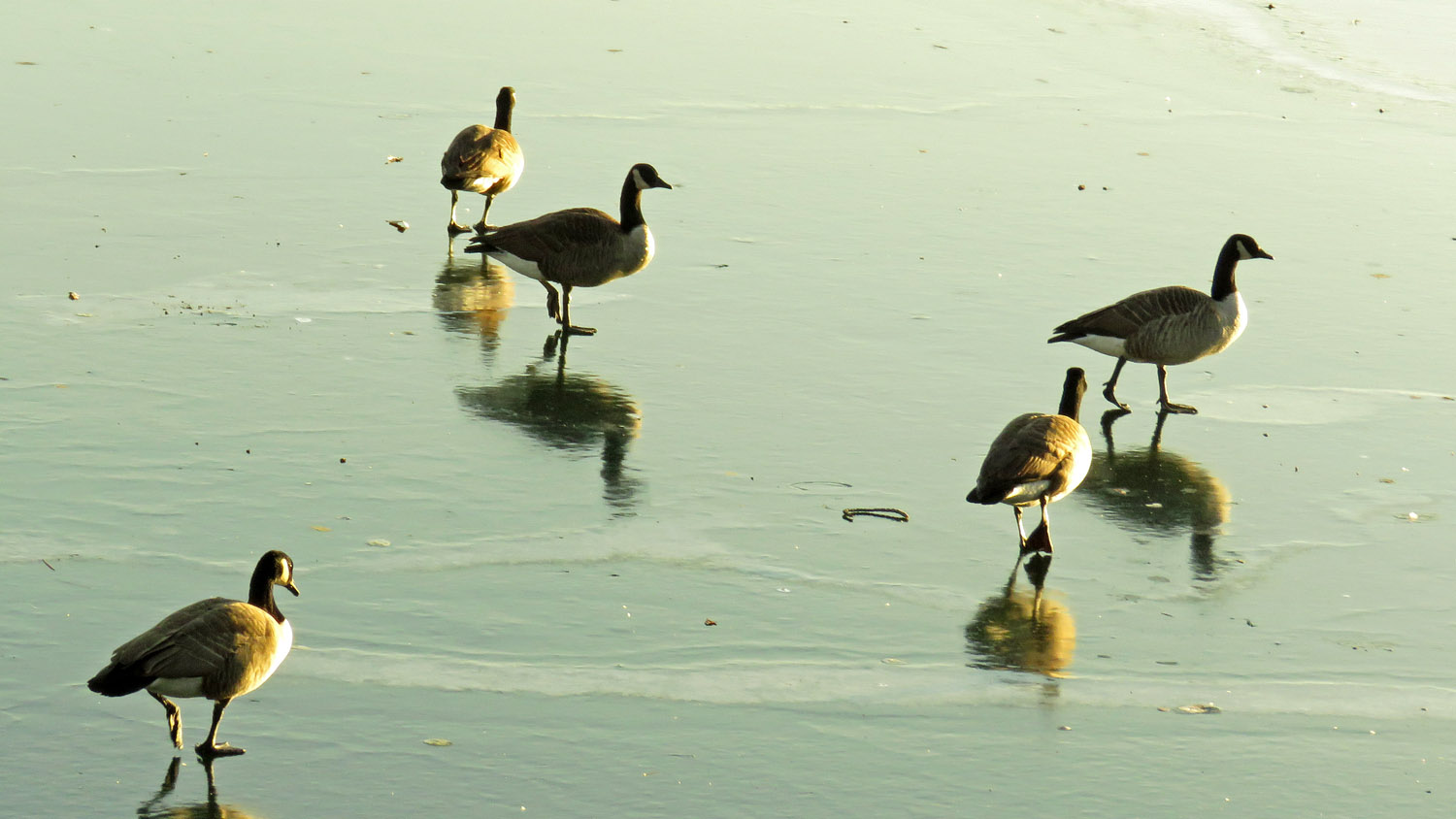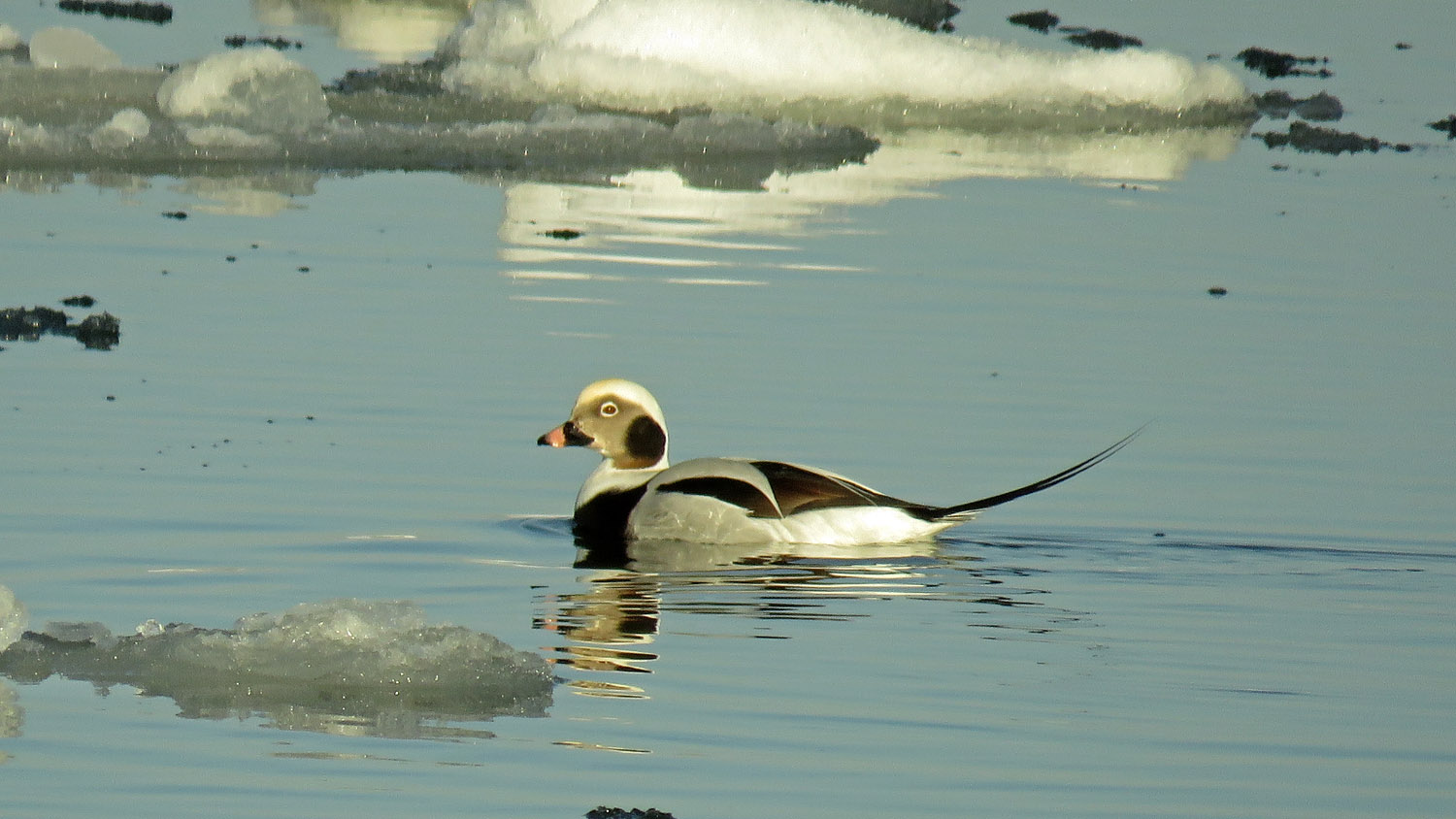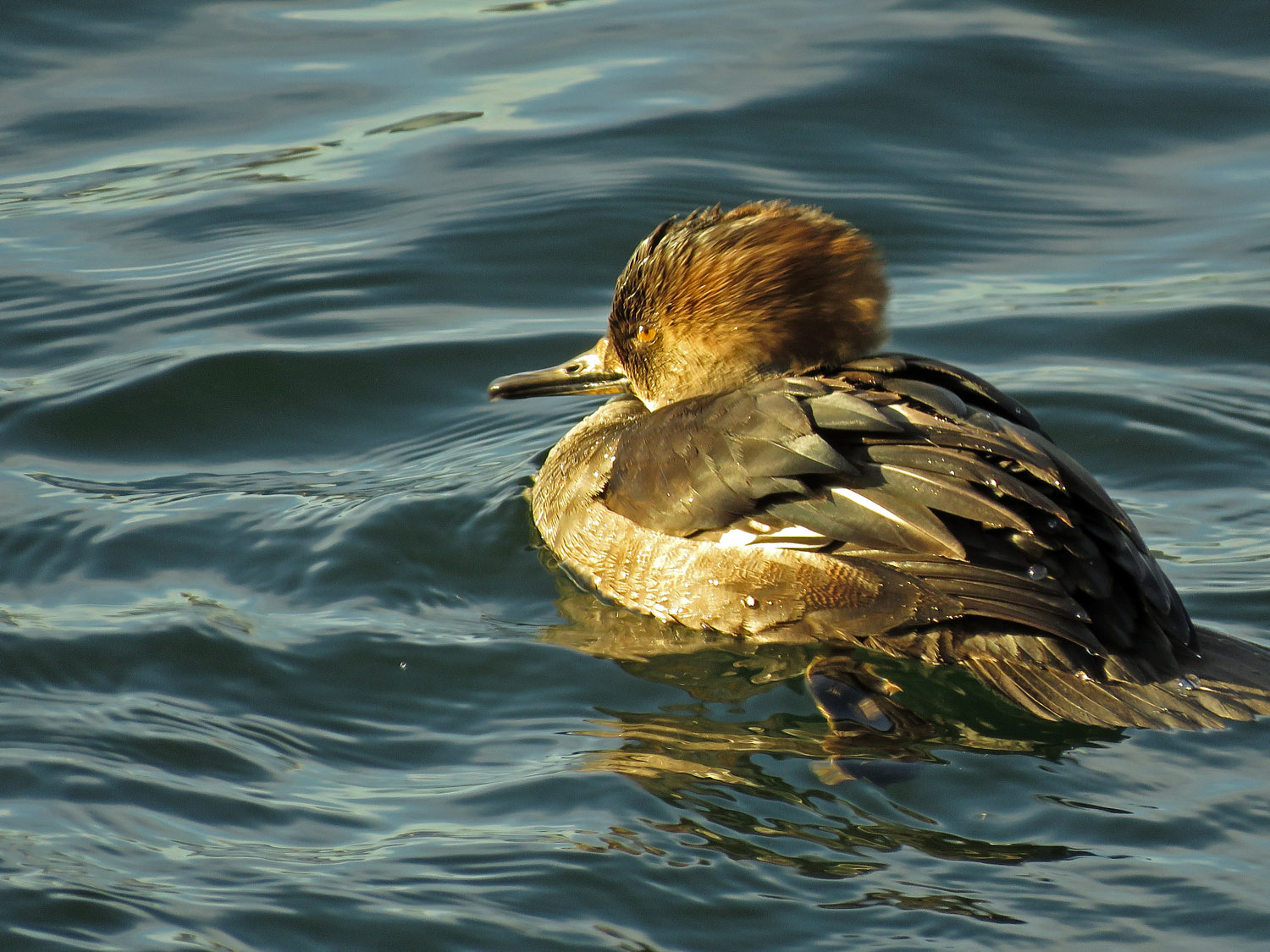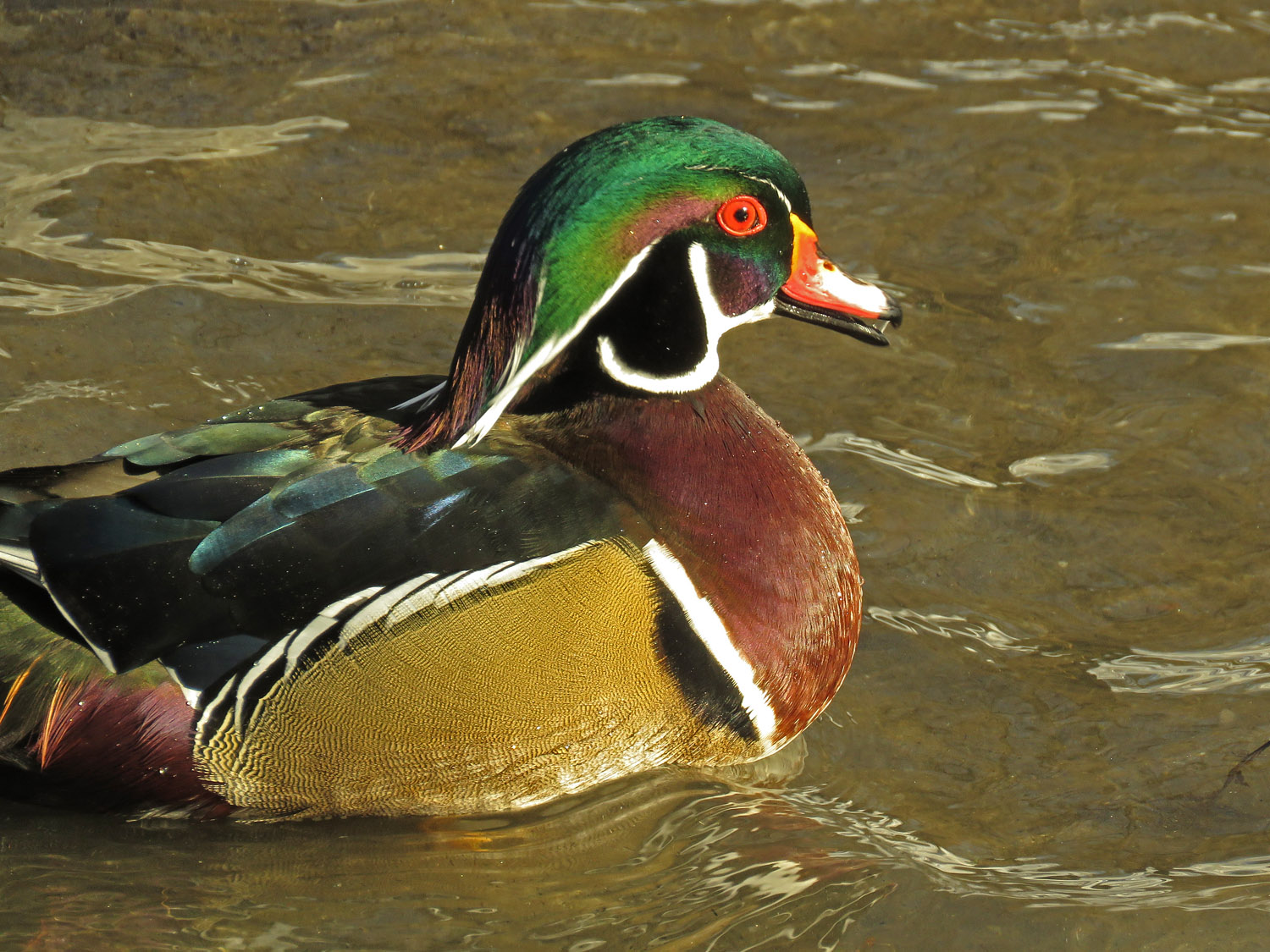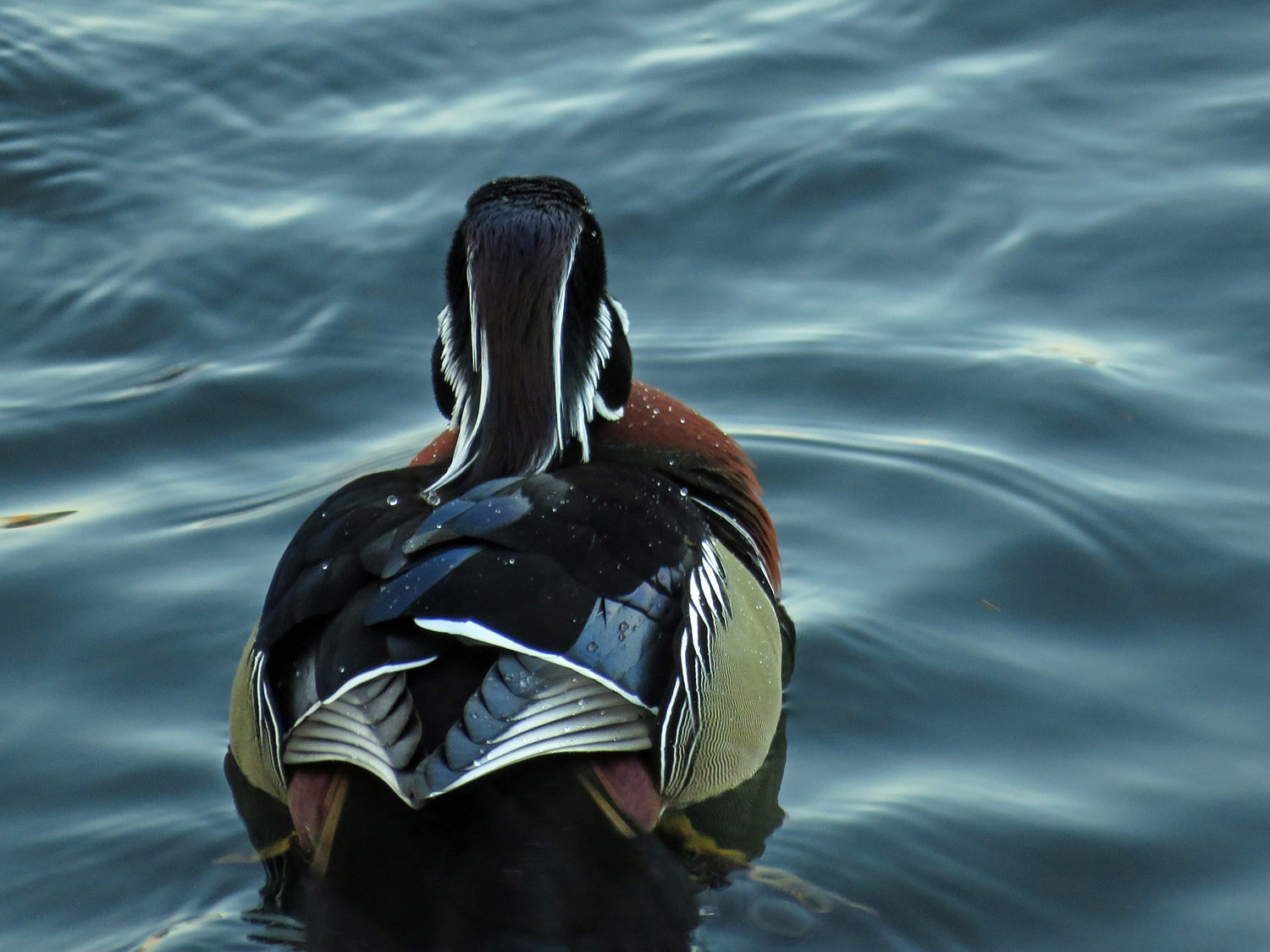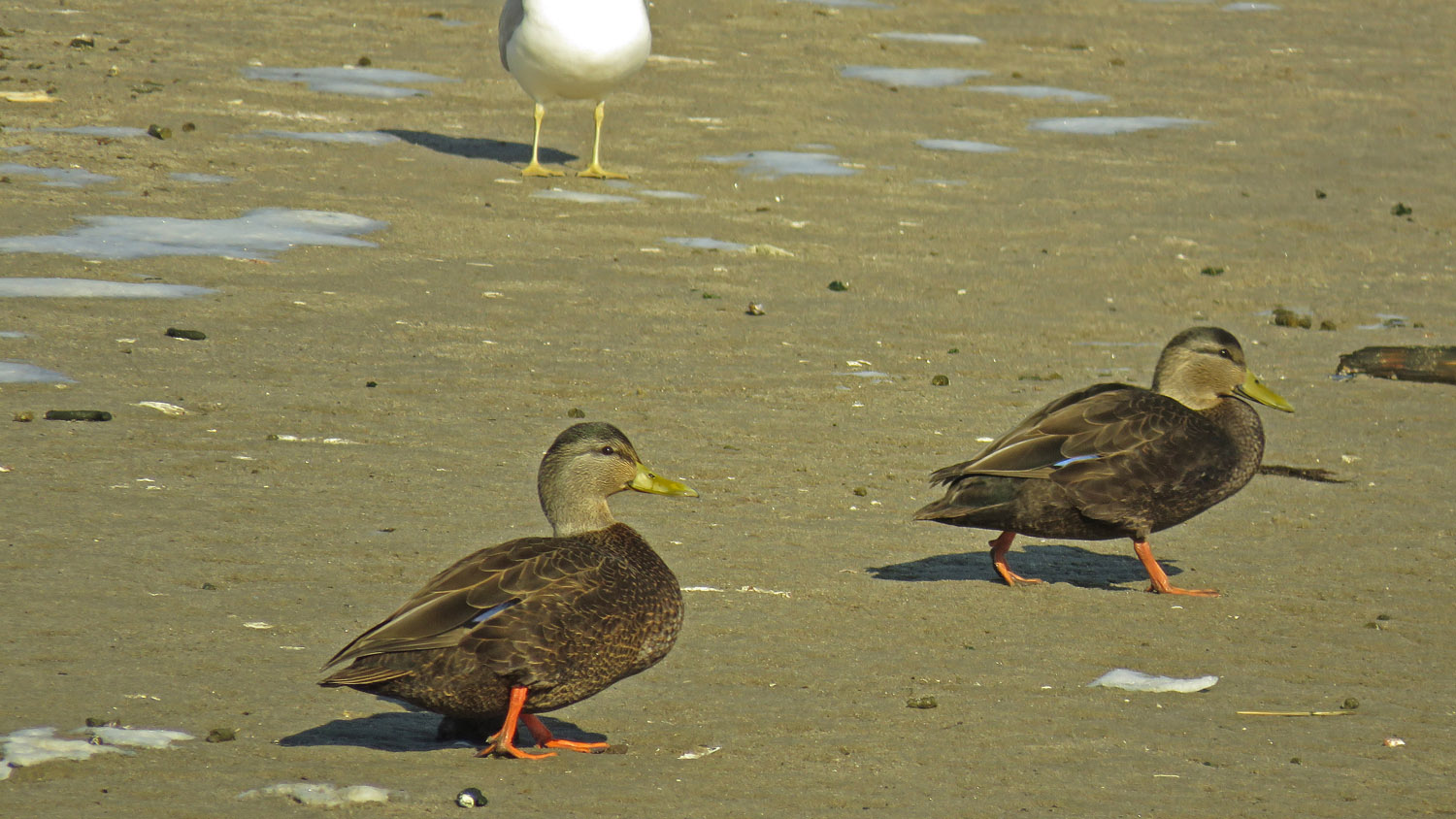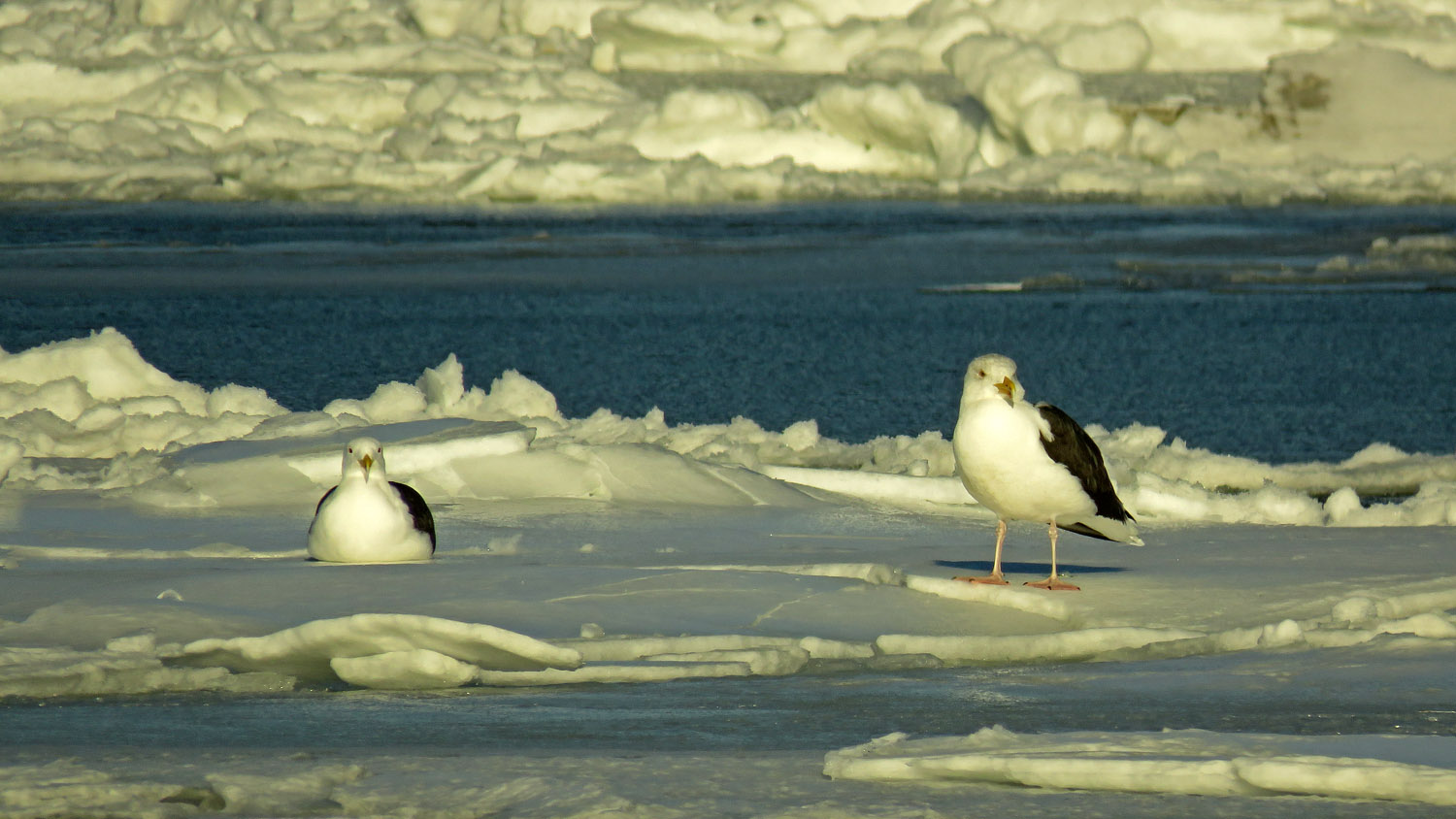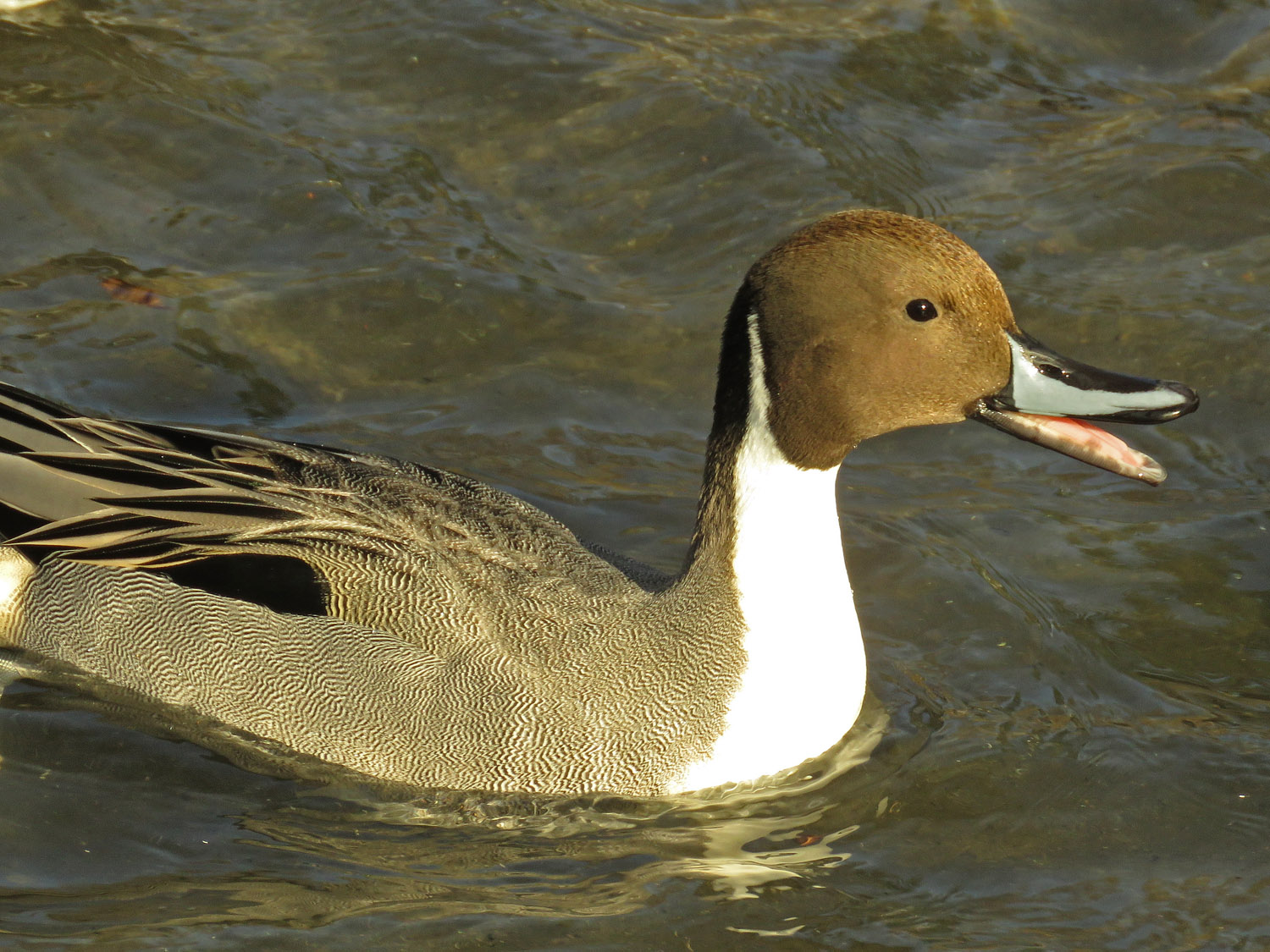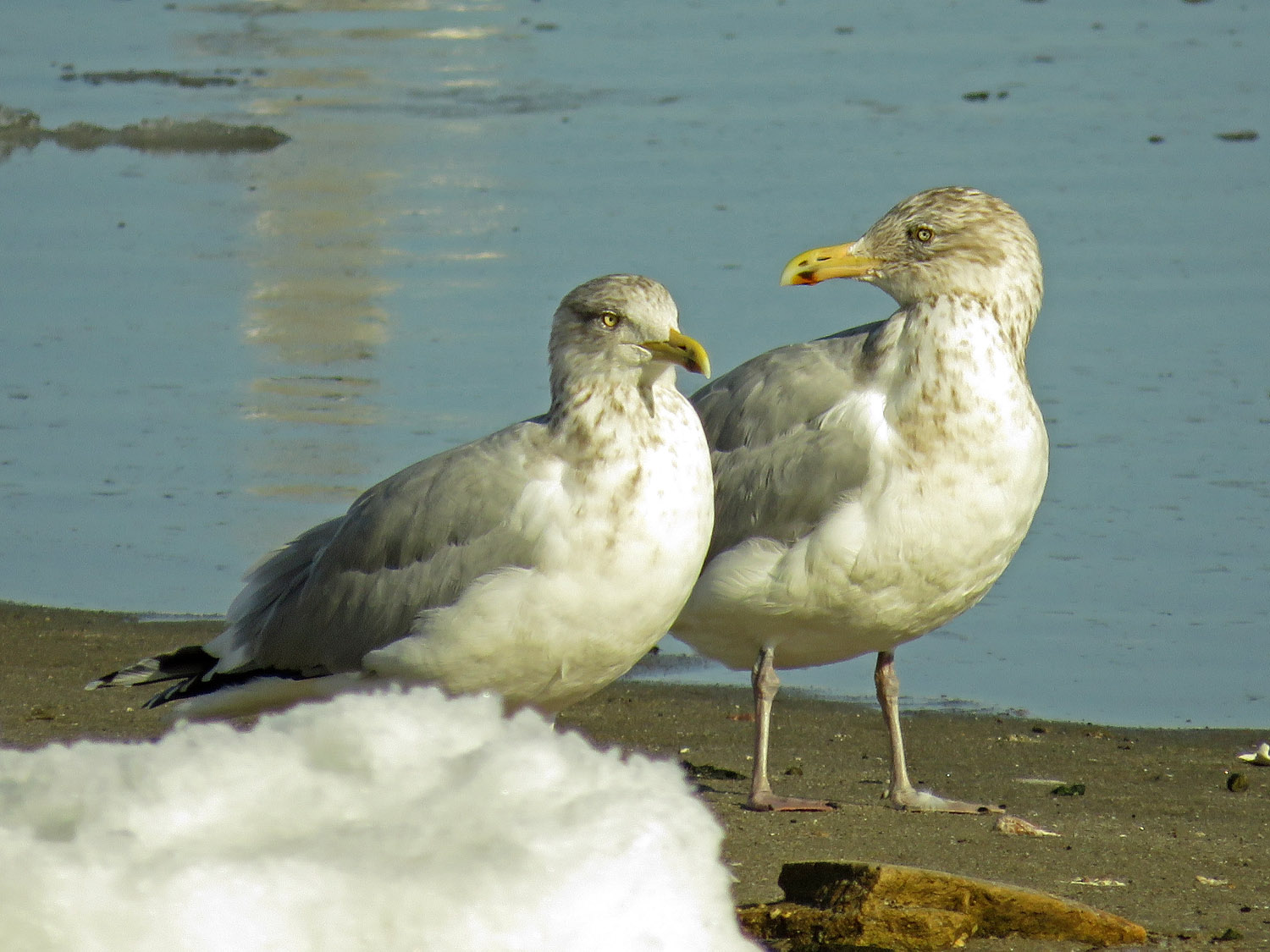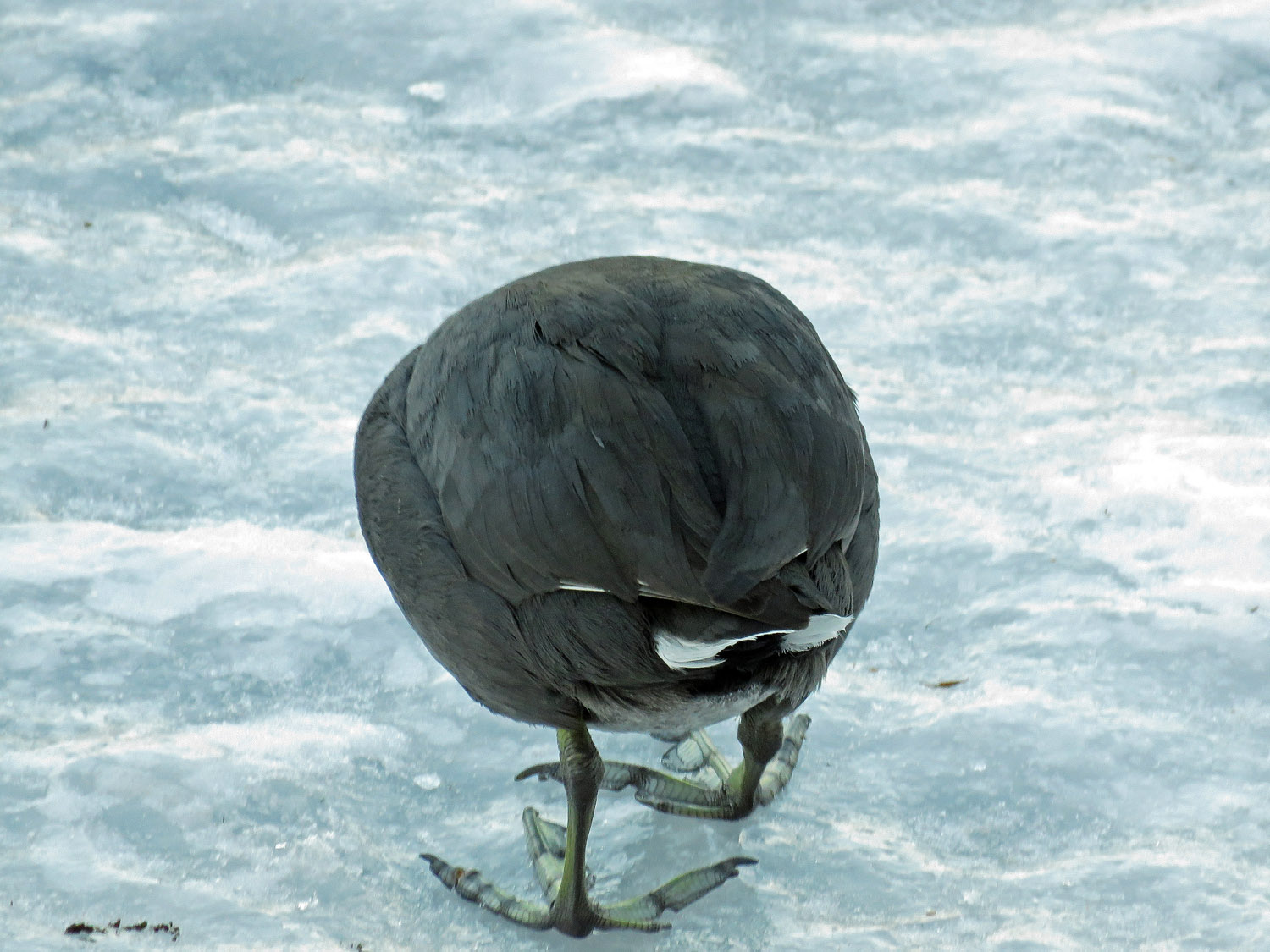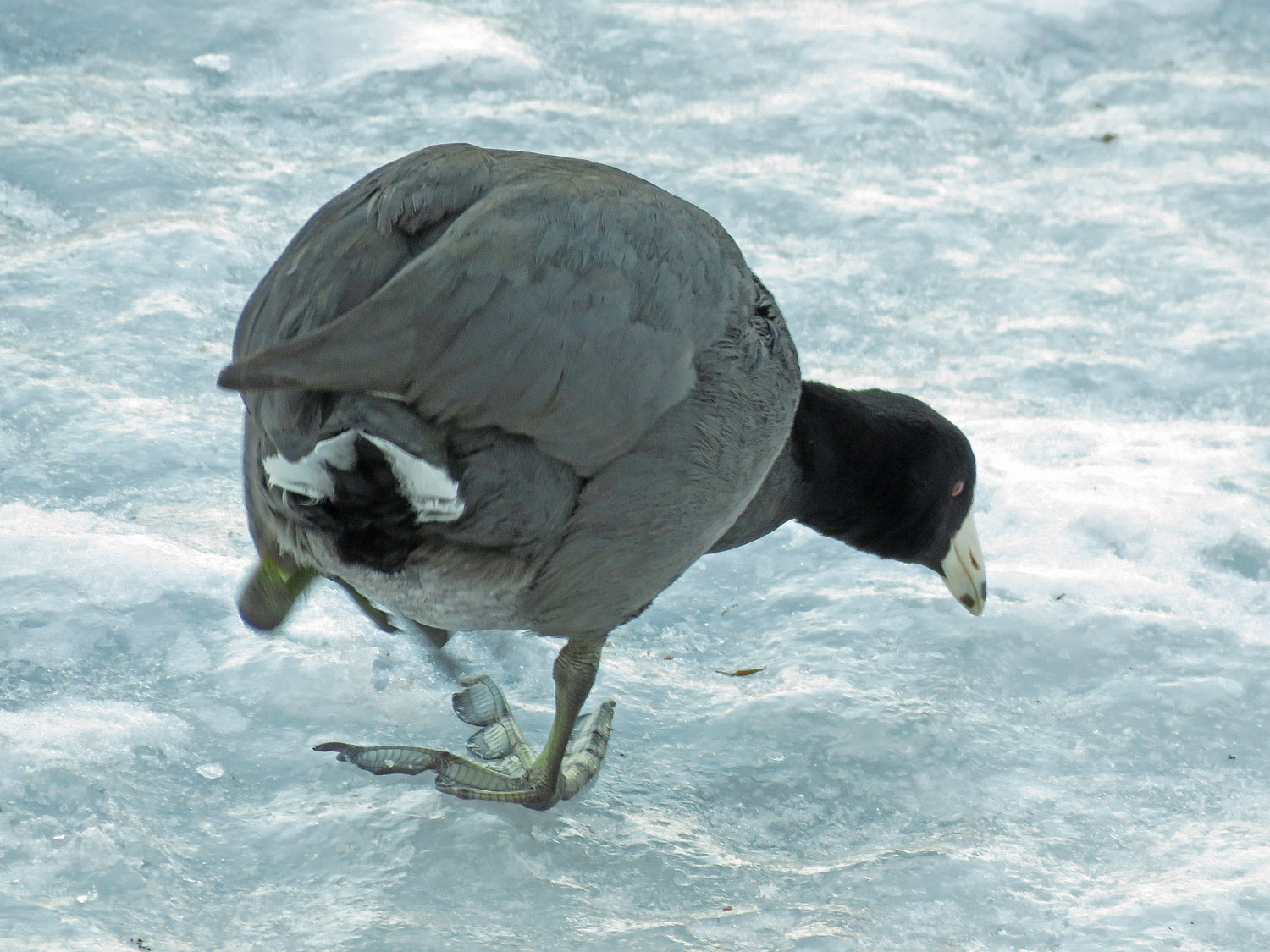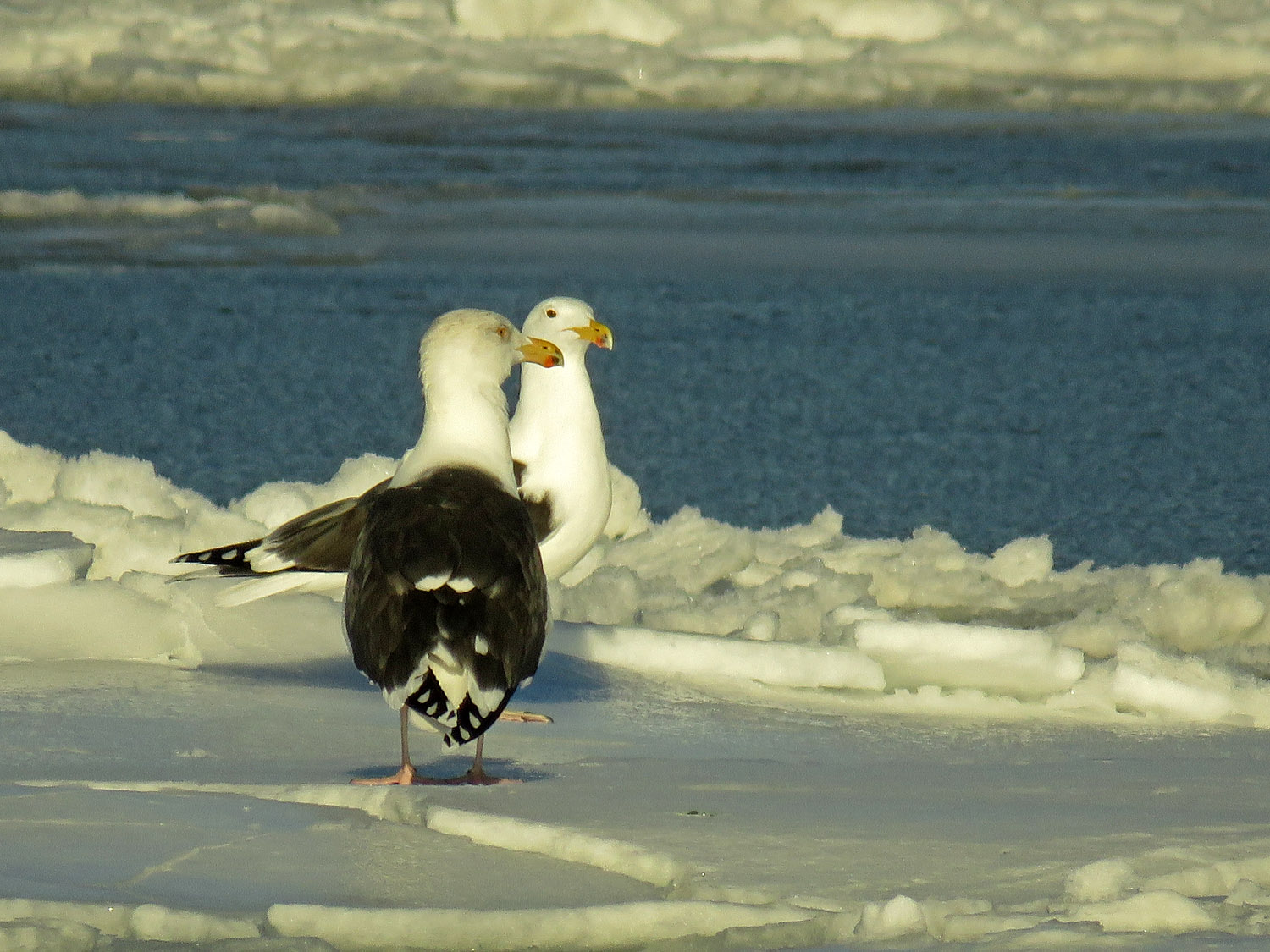Woody Wood Duck, Prince of the Pond at 59th Street in Central Park, is my favorite wild animal to watch. I try to see him as often as I can, and I make up stories about him. I stand on the shore and call out, "Woody! Woody! Woody!" in almost a song, and Woody will swim over to me, occasionally requesting peanuts and sunflower seeds.
Woody, April 4, at the Pond, Central Park
I tell people that Woody thinks he is a mallard because he swims around with a mallard pair and chases male mallards away from the female. I tell them that the female likes Woody because he keeps her from getting attacked by mallards other than her mate. And when her mate copulates with her, Woody bites his tail feathers.
Woody and the female mallard he swims around with, April 4, the Pond
When young male mallards come to the Pond, Uncle Woody teaches them about peanuts and standing up against the mallards and behaving like a Woody Wood Duck rather than just a "normal" wood duck. I call these young male wood duck students "Junior" or "Not Woody." J3 (Junior, power of 3) is a young wood duck that Woody has trained recently.
Woody, April 4, the Pond
J3, Woody's student, April 4, the Pond
Much as it is fun to make up stories about what Woody does and thinks, every now and then Woody behaves like a male duck. This happened on April 4, when Woody was seen force copulating with a female mallard, a sight that was a little disturbing to watch. I recorded the behavior, trying to refrain from judgment, and then tried to present it as a naturalist's observation.
Watching male mallards gang attack a female mallard is disturbing, because it is brutal and primal. As I female, I found it evoked my fear of rape. This kind of behavior is common in the world of waterfowl, and has been labeled as "rape" by some naturalist sources. But that is anthropomorphizing behavior that apparently has evolved to continue the different duck species. Waterfowl, especially mallards and wood ducks, tend to hybridize more than any other bird species, although many of the hybrid offspring are infertile.
The female mallard remained under the bush for a couple of minutes after the forced copulation.
I have watched five mallards almost drown a female mallard. To watch a duck I thought I understood participate in this behavior reminded me that Woody is indeed a wild animal and will behave as wild animals do.
Woody, April 4, the Pond
I decided to accept Woody for the wood duck that he is. I have continued to visit him at the Pond, although I couldn't find him last night when I looked. He has left the Pond in the past, only to return in June to molt. If he has gone, I wish him safe travels and hope that he returns soon.




